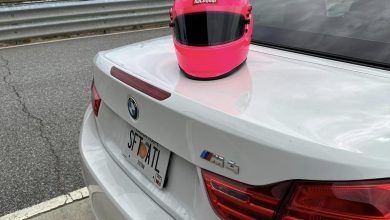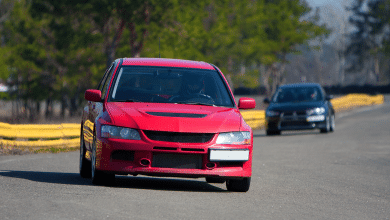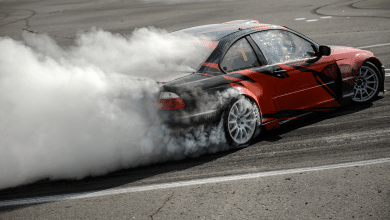Track Day Primer
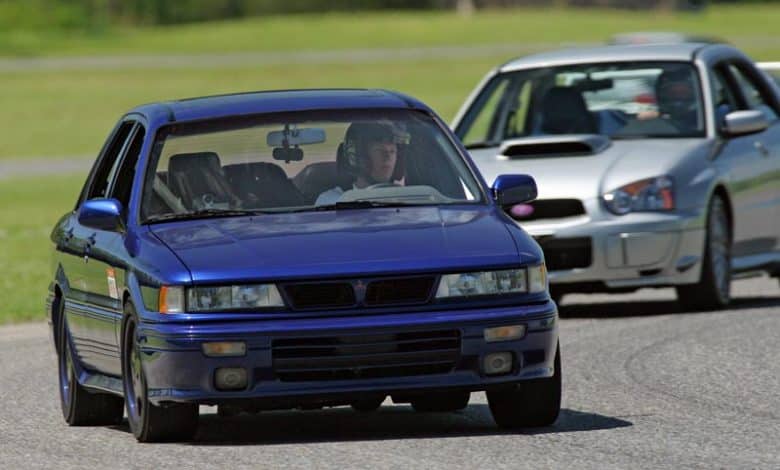
If you’ve ever been interested in driving a car on track, there may be no better time than now to do so. The number of ways and opportunities to get on track, whether with your car or someone else’s has never been greater. In this blog post, we are going to break down a few things you’ll need to know before attending a track day, sometimes known as a HPDE (High Performance Driving Event).
After you’ve read through this list, you can head over to our list of Atlanta area track days and events. We’ve got a complete calendar of car events, including track days and HPDEs from some of the top organizations.
We’ve broken this blog post out into two categories: Show up and drive (car and all materials are provided, some with additional fees) and drive your own car. While driving your own car is a much more cost effective way to go in terms of up front pricing, it’s always good to have an understanding of what else you may need and what the potential risks are for wear and tear.
Preparing Your Own Car For A Track Day
Your first track day is often as simple as registering and showing up. Every track event has a minimum tech inspection qualification. Still, if you car is in good running order with reasonable remaining brake and tire life, chances are you are ready to get on track.
Gear Needed
The basic safety gear needed to join any track day are:
- All drivers will need a SA rated helmet, 2015 or 2020
- Long pants
- Closed toe shoes
- Shirt with sleeves
If you do not own your own helmet, rentals are available at most tracks (some free). Note that rentals are generally first come, first serve. On those hot summer days, you’ll definitely want to remember the long pants rule.
Tech Inspection
If you’ve never done a track day in your own car, here are a few things to be prepared for. While this is not an exhaustive list, it should be considered “price of entry”. It’s important that you know what your car is up against for the time at the track. If you are not sure about something, I’d recommend having your car checked out. Or consider a show up and drive activity so that safety can be more assured.
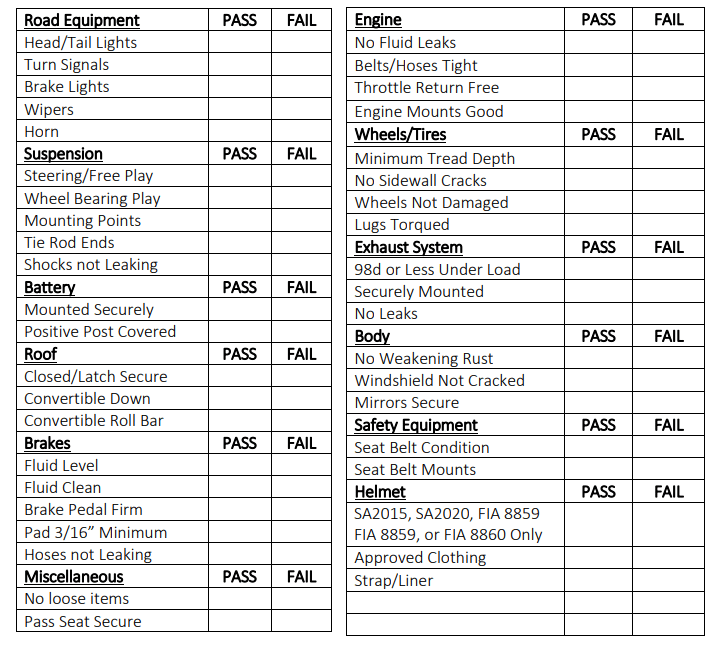
Every track day will generally have a tech inspection to ensure your car is in good enough condition to run. This will include, but won’t be limited to:
- All lug nuts on all wheels (usually no exceptions)
- Battery tied down
- Nothing loose on the interior
- Nothing leaks (no oil, coolant, etc)
We also highly recommend avoiding a track day until your vehicle is fixed if you have any of these issues:
- Doesn’t shift well
- Has problems with overheating
- Has improper alignment/tire wear
- Any issues with the braking system
- Any non functioning portion of your safety system (seat belts, seat, etc)
Wear Items
Track days can be pretty hard on your car, much more than an autocross, drag racing or spirited mountain drive. Here are a few of the wear items we suggest checking:
- At least 50% tire life left
- At least 50% brake life left
- Good alignment/tire wear
The amount of tire life needed really depends on the tire. A very aggressive tire is going to wear more quickly than a sporty all season. So consider these rules of thumb, particularly if you are new and not hard and fast rules.
This list isn’t meant to be complete, so be sure to check the tech rules (usually posted on the websites of the track day). Different track days have different rules. You should specifically check if you have a convertible (even a hard top).
Don’t let the list above scare you, we just want to be sure you are operating a vehicle safely. It’s a lot of fun to get to take your own car to the track.
Track Day Classes
Just about every track day operator breaks their event into 3 classes: Novice (or Beginner), Intermediate and Advanced. Unfortunately these terms are not standardize and what they mean and what you get could vary greatly between series. However, there are a few general expectations.
Novice or Beginner Track Day Class
Novice Or Beginner Track Day classes at track days are generally aimed at those who have never been on track before, or their previous experience was not at speed. These can also be a good option if it’s been more than 3-5 years since you last drove.
Another underrated group for this class is those who have changed changes dramatically. For example, going from a 300hp AWD to 600 RWD car, particularly if you have limited experience on track, we’d recommend novice.
In addition to be targeted at novice drivers, depending on the series you may experience one or more of the following:
- Passing restrictions, or likely not allowed at all
- More instructors (perhaps even 1 to 1)
- More classroom time and smaller or maybe shorter run groups.
- More time under controlled laps – as in following behind a pace instructor rather than running purely on your own.
We should note that Novice groups are often very popular, particularly at track days that appeal to new groups. These slots will sell out quickly.
Intermediate Track Day Class
Without question is this is the most popular group. This group generally includes people who do track days occasionally, have experience on track or maybe even are regular autocrossers. Intermediate run groups generally have point by passing in restricted areas. They generally will begin with controlled laps but usually run most of the day without instructor mandated controls. They do include instruction and class time, but unless specified you shouldn’t even expect to have an instructor in car with you the whole time.
Advanced Track Day Class
Generally these groups come with little to no fixed instruction, or the instruction is focused on cooperative safety and advanced driving techniques. Still, don’t confuse this with a car control clinic. You will be encouraged to drive at a pace you want to achieve, but generally they will call you in for pushing your limits too far.
Expect passing to be point by but allowed anywhere their contract and the track allows.
Run Groups Explained
While this will generally be explained in detail and associated to your specific track day event, you will hear the term a lot. A run group is just how events organize the number of cars on track. This both allows more freedom and is safer. Why should you care? A few reasons.
- It impacts how much driving time you get. Run groups are generally described in number of minutes. So however many runs each group gets times that many minutes is how long you will be on track far. Most track days offer 1-2 hours of time in 20 minute sessions. But some offer much more.
- It impacts how crowded the track feels – a 60 day event where all cars are welcome on track at the same time feels a lot more crowded than 3 run groups of 20 cars each.
How Run Groups Usually Work
Class Run Groups
The simpliest model is each class (beginner/novice, intermediate and advanced) each are their own run group. Advanced cars go first for a period of time (usually 20-30 minutes) and the other drivers use the chance for additional classroom time. At the end of the time window, the first group comes in and the next group (like intermediate) goes out.
Some largest events may have more than one group of a class, or may even split into morning and afternoon sessions to get more cars on track.
Open Days Or Groups
Smaller events or ones with largely they same skill set will sometimes run what are known as “open groups”. Essentially the track is open all day to whoever wants to run. The track operator may still cap the number of cars on track at the same time. If the limit is hit, you just wait at pit out until the next car comes in. If nobody comes in, after 20 minutes they’ll start forcing cars to come in so others can go out.
Assigned Groups
You’ll see this at a lot during shared track days, such as those before a more competitive race or those at memberships tracks where you may experience dramatically different cars. You may also see this at mixed/car bike groups.
The reason? It generally organizes the run groups by cars that shouldn’t, often for speed or safety reasons, be on track together at the same time.
Things You Should Know Before Taking Your Car On Track
Don’t Get In Over Your Head
First, don’t get in over your head. Events often have beginner, intermediate and advanced. Don’t let your ego get the best of you, choose the right level. Beginner if you’ve never driven on track or it’s been more than a few years since you’ve been. Intermediate if you regularly drive performance events or have been on track recently, but do not go regularly. If you are advanced, you probably aren’t reading this article.
Your Insurance May Not Cover Damage To Your Car Or Track
Your regular car insurance likely does not cover your or any damage you to do the track. That’s right, in most cases if you do accidentally go off track during an HPDE not only will most normal insurance policies not cover the incident, the track will make you pay for any damage you do the track facility. While these is EXTREMELY rare, you may want to consider track day insurance if you have a high value car or are worried about covering damages.
Even with track day insurance, be sure to review your policy and discuss with your insurance agent any questions and be sure you are covered. Even some track day policies don’t cover everything, like track damage. If your agent doesn’t understand cars, find an agent or broker that works with car enthusiasts.
Be Careful Of Using Timing Apps Early On
While everyone likes to measure and compare yourself, save the timing apps like RaceChrono for when you have a little more experience. Timing and pushing yourself can get you in trouble. But if you just really want to know how you compare after you’ve gotten your sea legs under you, there are a number of free and inexpensive apps. Just be sure you have a good cell phone mount!
Focus On Learning
Our last bit of advice is find a track day experience that focuses on learning. In car instruction is going to be more valuable than follow on or parade laps. Both are great experiences, with different price points, but if you enjoy yourself and want to go more, definitely look for instructor focused events.
Show Up And Drive
If you are looking to take a specific car out on the track, or simply don’t want the risk or expense of taking your own car then this section is for you. These events and locations generally are more expensive than taking your own car, but are significantly more accessible. In most cases you don’t need to bring anything but the proper attire, which is generally long pants and closed toe shoes.
Xtreme Xperience
Xtreme Xperience offers super car driving experiences on track at speed. You get to choose your favorite exotics from our hand picked line-up including the Ferrari 488 GTB, Lamborghini Huracan LP610-4, McLaren 570S, Porsche 911 GT3, Nissan GT-R or Dodge Challenger Hellcat Widebody, 2020 Corvette Stingray Z51, and Ford Mustang Shelby GT500 and drive them on a real racetrack with no speed limits.
More Information: Xtreme Xperience Review or Xtreme Xperience website
Porsche Experience Center
In order to truly appreciate what a Porsche is engineered to do they’ve designed a 1.6-mile circuit to showcase the incredible performance of Porsche vehicles. Test it out for yourself from the kick plate to the off-road course, you’ll be able to experience the unique capabilities of Porsche vehicles. On all six aspects of the track, various driving experiences are set up so you can get the most out of every lap.
More Information: Porsche Experience Center Review or Porsche Experience Center Website
Finding A Track Day
Thanks to ShiftAtlanta you can find a track day a few different ways:
See All Atlanta Area Track Days
Search By Track (i.e. Road Atlanta, Atlanta Motorsports Park)
Search By Popular Track Day Company (partial list)
Don’t have the kind of life where you can only do special events on the weekends, or want sometimes just want to save a few bucks. Track Day operators are now offering mid-week track days.


